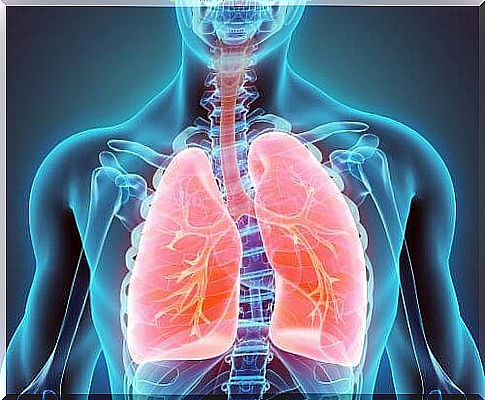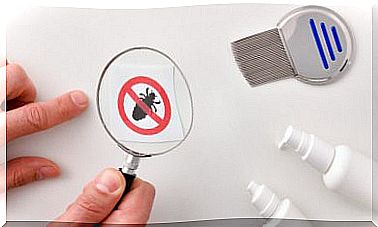Can Rheumatoid Arthritis Affect The Lungs?
Rheumatoid arthritis is an inflammatory disease that usually affects the joints and is suffered by 1% of the world’s population. However, rheumatoid arthritis can also affect the lungs directly and indirectly.
Up to 50% of patients with rheumatoid arthritis show extra-articular alterations, such as alterations in the heart, lungs, kidneys, blood and even in the nervous system.
In this article we will explain how rheumatoid arthritis can affect the lungs, the symptoms it produces and its treatment.
What is Rheumatoid arthritis?
Rheumatoid arthritis is a chronic autoimmune inflammatory disease. It usually occurs at any age, but is more common in middle age, between 40-50 years, and in women.
It is an autoimmune disease because our body loses tolerance towards our own tissues and attacks them as if they were strangers, causing them to deteriorate. This technically means that autoantigens appear – our tissues – that are attacked by autoantibodies – defenses that attack our own cells.
Despite being able to affect any organ, the affectation of rheumatoid arthritis predominates in the joints, specifically in its synovial membrane. This is a layer that surrounds the joint and nourishes it, since within the joint there are no blood vessels that provide it with nutrients.
Due to the attack of our immune system, the synovium becomes chronically inflamed and destroys the cartilage of the joint. If left untreated, it can lead to bone destruction.
Can rheumatoid arthritis affect the lungs?

Rheumatoid arthritis can affect any structure that makes up the lung : the pleura, airways, blood vessels, respiratory muscles, and the lung itself.
The process by which pulmonary involvement occurs is unknown. However, it has been observed that various factors may intervene such as:
- The genetic predisposition of the person.
- Immune disorders that occur in the body.
- Environmental factors, such as tobacco. For example, men ages 50-70 with more active rheumatoid arthritis and a history of smoking are more likely to develop lung problems.
Pulmonary involvement due to rheumatoid arthritis can present in various ways, as we will see below.
Interstitial lung disease or ILD
The most common presentation of rheumatoid arthritis (RA) in the lung is interstitial lung disease (ILD). It is estimated that in patients with RA, up to 58% may have PID.
The lung in a healthy person is elastic to allow it to expand each time the person breathes in air. However, in PID, the lung becomes inflamed and fibrous causing a loss of elasticity. This causes that it cannot expand properly and that the patient does not breathe well.
In addition, PID can damage nearby structures, such as the airways and blood vessels, further worsening the patient’s choking symptoms.
Pulmonary hypertension
This entity is more frequent than expected and occurs in 30% of patients with RA. It is usually asymptomatic and is a consequence of the evolution of PID.
Under normal conditions, the right side of the heart pumps blood through the lungs, where it picks up oxygen. The blood then returns to the left side of the heart, from where it is directed to the rest of the body.
Due to PID, the lung becomes increasingly rigid, causing the pulmonary vessels to become occluded and cannot carry much blood. When this happens, pressure builds up causing pulmonary hypertension.
Lung disease induced by RA treatment
Many of the drugs used in RA are associated with lung injury as an adverse effect. This adverse effect is seen especially in the use of methotrexate, which is an immunomodulator and anti-inflammatory. These drugs cause fibrosis of the lungs.

Pleural disease
The pleura are two layers that surround the lung and separate it from the rest of the tissues. Pleural involvement is a common manifestation of lung disease in RA. According to a 2008 study on RA and its relationship with the lung:
This involvement causes the pleura to continually fill with fluid and have to be drained; that is, put a tube that connects the outside with the pleura to remove the fluid.
Rheumatoid nodules
Small lumps can form in the lungs known as pulmonary rheumatoid nodules. Pulmonary nodules usually have no signs or symptoms and do not pose a risk for lung cancer.
However, in some cases, cavities can develop within a nodule, which can become superinfected and create communication with other tissues, spreading the infection.
Airway
The air ducts through which air enters and leaves, that is, the bronchi, bronchioles and alveolar sacs, can be affected. The immune system continually attacks them, which causes them to thicken and become occluded, preventing the passage of air.
Diagnosis and treatment of RA lung disease
If you have rheumatoid arthritis and have respiratory symptoms, you need to see your doctor. An example of these symptoms may be shortness of breath that cannot be explained by another cause.
The diagnosis is based mainly on imaging tests, the clinical picture, respiratory function tests and biopsy – a small piece of the lung is analyzed under the microscope.
Treatment of pulmonary involvement involves continuity with rheumatoid arthritis medication. However, if the lung involvement is caused precisely by this medication, it should be withdrawn and replaced with one that does not have pulmonary toxicity.








